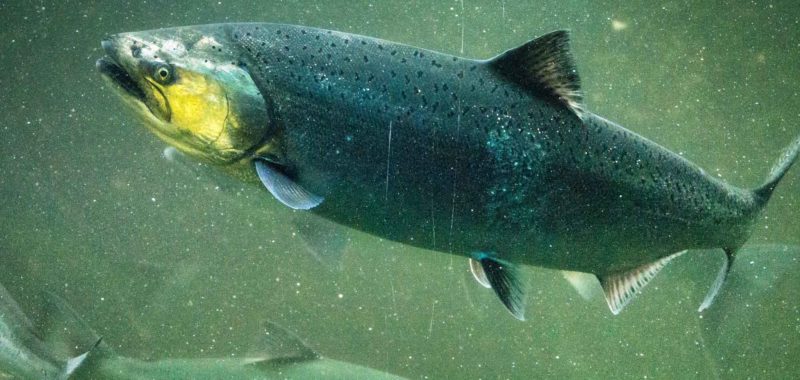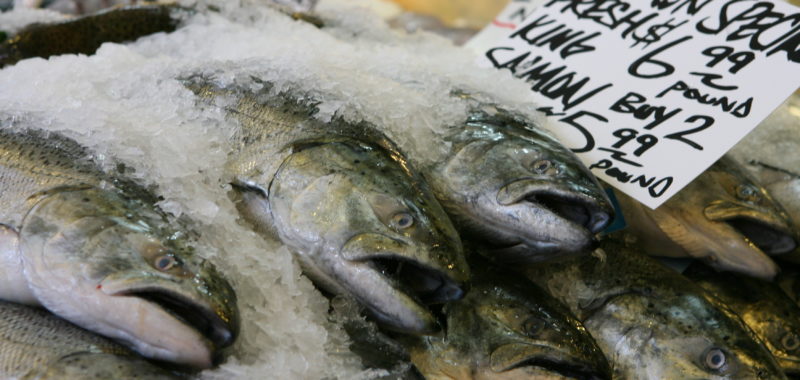Priority Species: Pacific South Coast Chinook Salmon
Scientific name: Oncorhynchus tshawytscha
DFO stock status: Stock of Concern or Low (9 out of 11 stocks), Stable (2 out of 11 stocks)
COSEWIC status: Of 16 south coast chinook populations — Endangered (8), Threatened (4), Special Concern (1), Not at Risk (1), Data Deficient (2).
Dive deeper into stock-specific status details.
Seafood Watch
Ocean Wise
MSC – N/A
South coast British Columbia Chinook salmon populations have been on a steady decline for the last 20 years. This includes chinook returning to the Fraser River and watersheds of the Strait of Georgia. Most of the 35 recognized populations have declined 50 per cent or more, with only a few populations showing increased abundance. Most stocks do not have biological escapement goals3. While the fishing mortality4 incurred by the commercial fishery is largely understood and managed, the large recreational fishery is more challenging to manage.
In November 2018, the Committee on the Status of Endangered Wildlife in Canada (COSEWIC) reviewed the status of 16 south coast chinook populations and found 8 to be Endangered, 4 to be Threatened, 1 Special Concern, 1 Not at Risk and 2 Data Deficient. Adding to the concern about chinook populations is the fact that the endangered Southern Resident Killer Whale population is reliant on these chinook populations for their survival. In April of 2019 DFO announced strong recovery measures to help rebuild these chinook populations.
Population: There are no simple solutions for rebuilding chinook populations over the long term. In the meantime, an overall reduction in fishing mortality is required to get more chinook to their spawning grounds.
Bycatch: Bycatch of chinook in other fisheries such as the U.S. pollock fishery has been identified.
Habitat: Freshwater habitat protection issues continue to be an issue for all salmon species. Strengthening the habitat provisions of Canada’s Fisheries Act and increasing on the ground enforcement of habitat related infractions are necessary parts of the solution for chinook and other salmon species.
Gear: N/A
Management/Monitoring: Implementation of the Wild Salmon Policy is a necessary requirement for the long-term sustainability of chinook populations. Reduction in recreational daily limits is necessary to reduce fish mortality. Increased monitoring of recreational fisheries is required to better understand the impact these fisheries have on chinook populations.
Markets: N/A
Related SeaChoice MSC submissions on Pacific salmon can be found here
Summary of Pacific Salmon Outlook Units for 2018 – DFO
Preliminary 2018 Salmon Outlook
Albion Chinook Test Fishery Index of Abundance (Fraser River)
Pacific Marine Conservation Caucus
Common/Market Name
Chinook Salmon
Distribution
B.C. South Coast
Harvest Method
Gear types: Gillnet, trolling, purse seine
Management Agency
Department of Fisheries and Oceans (DFO): Pacific Region
Market Distribution
Primarily sold into Canadian and U.S. markets




